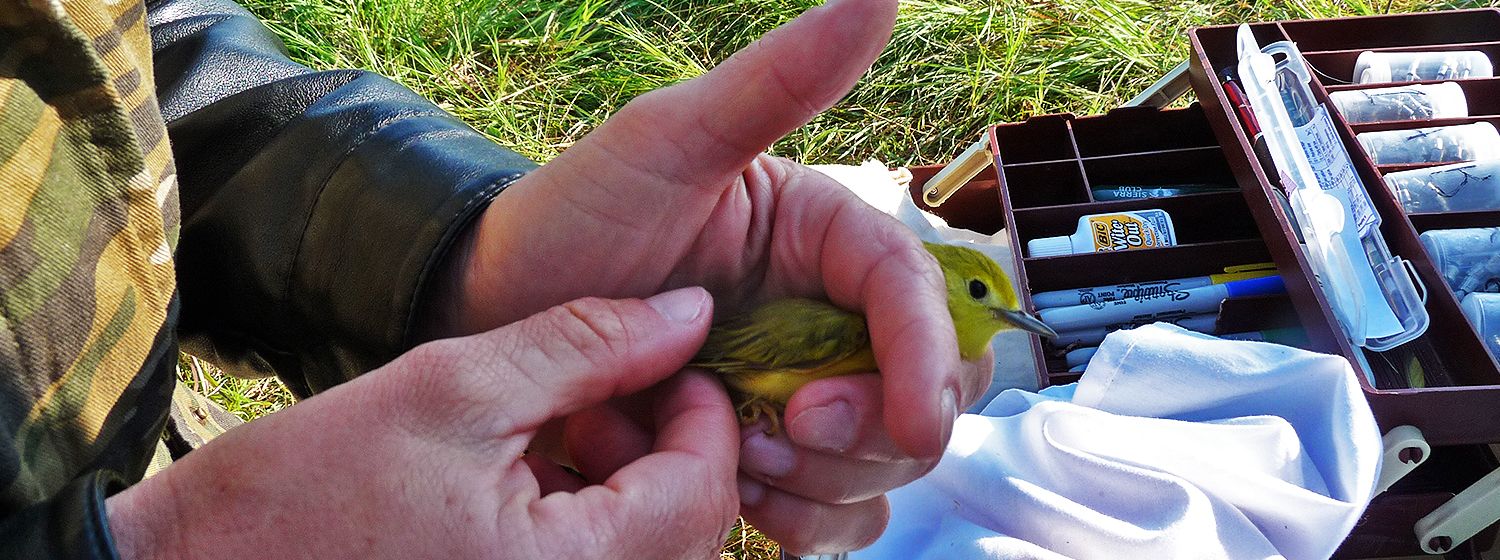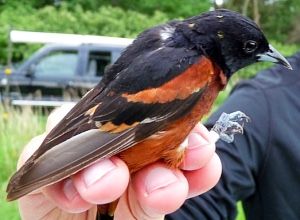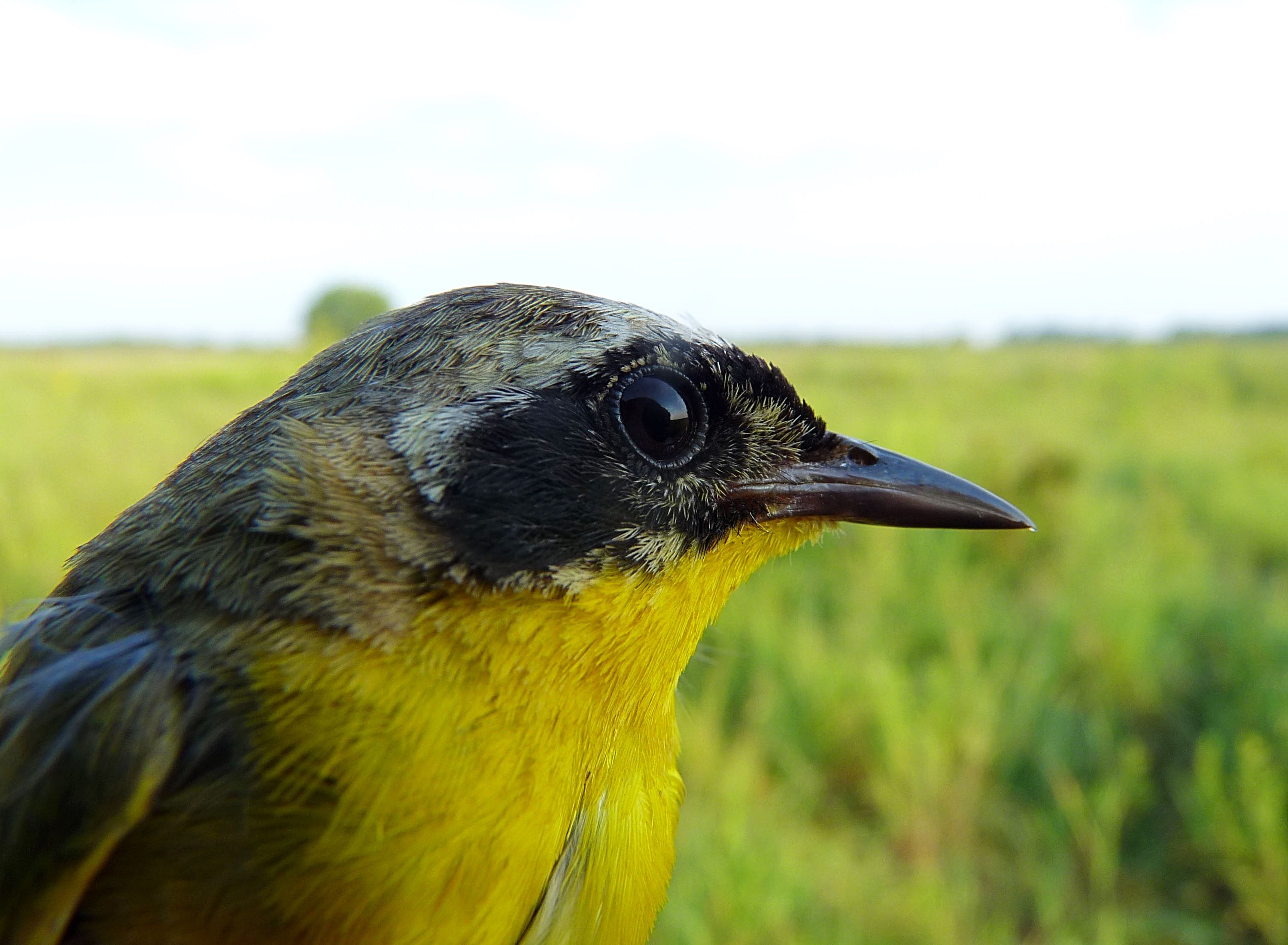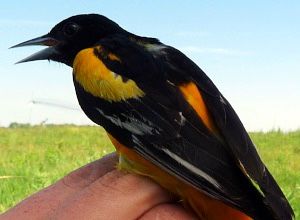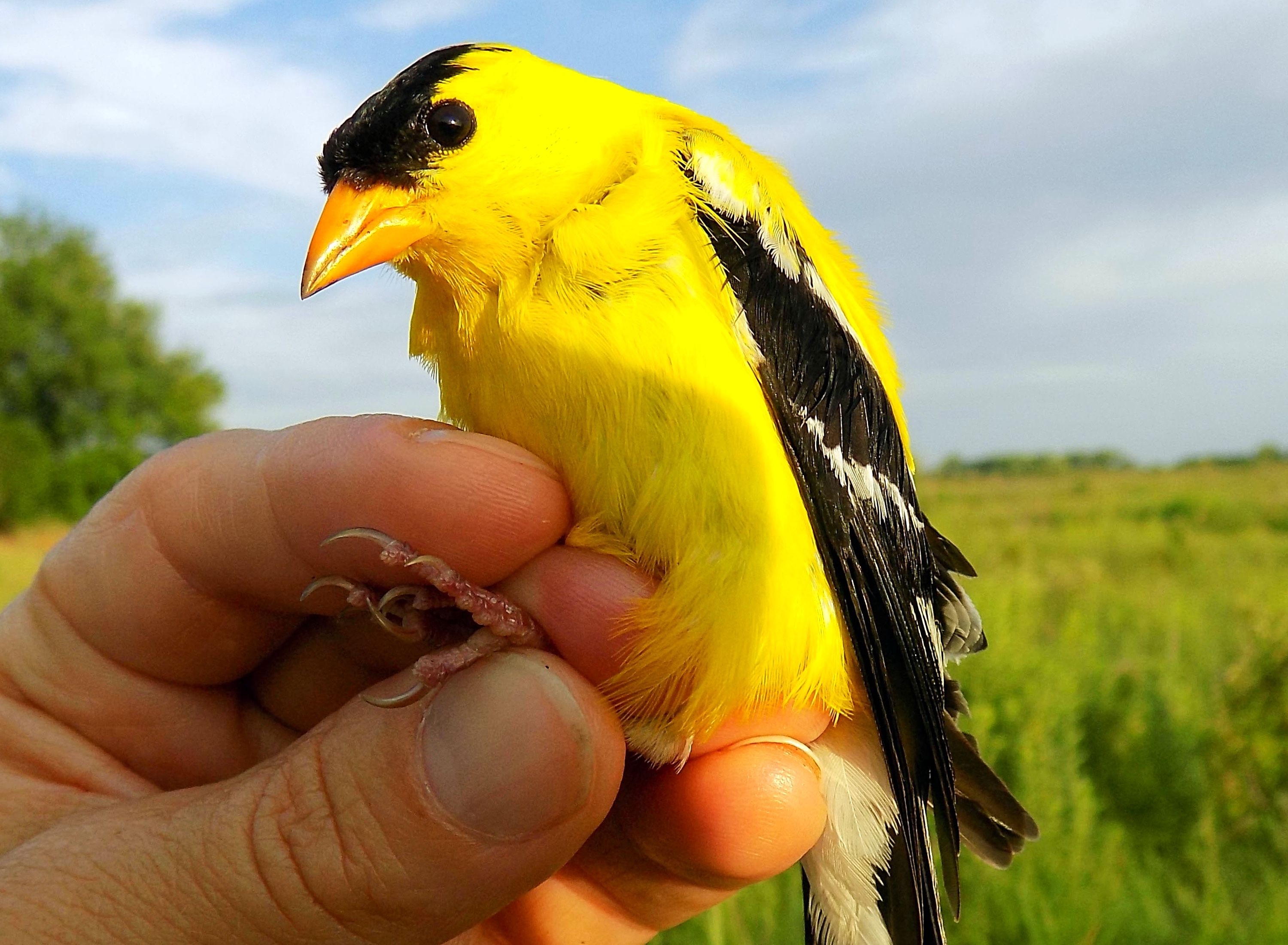Demographic Responses of Grassland Birds to Habitat Management and Climate Change
Grassland birds comprise the most rapidly declining group of birds in continental North America. The conversion of native grasslands to farmlands has been a primary driver of these declines, so protecting and managing remaining grasslands is a conservation priority. At the same time, climate change is driving ongoing changes in birds’ habitat, geographic ranges and migration phenology. As the Great Plains retain a greater amount of intact grasslands than many areas further east, we are in an ideal area to research grassland birds in relict prairies that can serve as models for restoring degraded prairies elsewhere. We are investigating demographic responses of grassland birds to habitat type, land management actions [burning, grazing by bison (Bison bison) and cattle (Bos taurus), invasive tree removal, native plant restoration], and climate change parameters (changes in temperature and precipitation patterns over time). We are collaborating with The Institute for Bird Populations in this effort, collecting and analyzing mark-recapture data on grassland birds through the nationwide Monitoring Avian Productivity and Survivorship program. Baseline population data on target species gathered in 2002-2007 will be compared with new empirical data collected on target species from 2017-2021. From June through August 2017, we operated four bird banding stations over a period of 10 weeks, making 283 captures of 26 breeding bird species. We are continuing fieldwork in the coming years and will use data in quantitative analyses to model how adult and juvenile birds respond to habitat management and climate change over time. We will use findings to protect, manage, and restore the more than 10,000 acres of tallgrass prairie and wet meadow habitats managed by the Crane Trust to benefit bird conservation.
Nicole Arcilla

